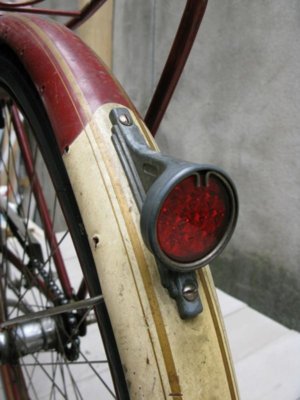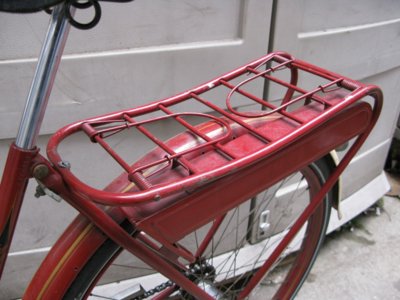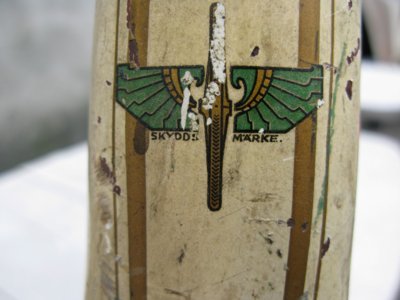swedish Crescent bike
Hi, I am a swedish bicycle collector, and let me first congratulate you to a very nice and rare bike! I collect mainly Swedish bicycle´s from the period 1900-1940. I especially like the bicycles made in the 30´s because of their suberb design and quality. (I also got an American bike, a Columbus from Ohio, made around 1896-1899)
Let me first tell you about the Swedish bicycle brand: A company imported American Crescents starting ca 1896. The business was good, so they kept on importing the bicycles until the end of the making of the American Crescent (does anyone know which year they disappeared?) Around 1908 the started their on making of bicycles, the bought the right to use the name, the Crescent brand had a good reputation, so they kept the name. The importer Lindblads, kept on until the early 30´s, then they sold the factory to Nymans, the largest Swedish bicycle maker at the time. But Nymans made the bicycle according to Lindblads specificaions, and Lindblads acted as a retailer.
The nice fender ornament was a trend in the mid 30´s to 1940, although some makers kept on with them to the late 40´s. Both small and larger makers had their own ornaments, but some smaller bought neutral ones from a emblem maker.
Crescent made theirs in 1935 to 1940, then they started with a chromeplated diecast trime placed upon the fender top. But on childrens bicycles they still had the lady in a crescent moon during the 40´s, maybe the had a surplus of them, so the mounted them on the childs bikes instead of throwing them away.
Your bicycle are probably from the late 40´s, the toolbox on the luggage carrier and the deflector on the back fender tells me this. The Nyman factory only used german Torpedo hubs, which where stamped with to numbers on the hubshell that indicates the year the hub was made. However, during the time after the war it became hard to get Torpedo hubs since the factory was bombed, so Nymans started to make their on hubs via license from the Torpedo-factory Fichtel & Sachs. They were probably not always stamped with a year.
I can see that the frame number is located at the left side of the frame just below the saddle post, during the 30´s and earlier Nymans stamped the frame number under the frame holding the crank. I can´t read the number, but if you can read it it may be possible to estimate a production year if the hub is not stamped. In 1937, they reached 1000000 manufactured bikes.
Regarding the bike that “twowheelfan” refers to, on the “budget bicycle center” site (budgetbicyclectr.com/budgetbicycle...bike...crescent-bicycle/.../c-1915-american-crescent-bicycle) the appearance of colour, saddle and fenders point to that the bike were made 1938-1939, but not later, maybe a year earlier.
On this site, you can read more about the Swedish Crescent. See also
www.cykelhistoriska.se there you can see pictures of my 1936 Crescent men´s bike that i recently bought. (click “nytt” or “updates”and then “crescent 1936”)
My guess, is that you bike is from around the mid 40´s. It appears to be in original condition, with the exception of the saddle, which i believe is not the original one. The decal with the text “skyddsmärke” means something like “trade mark” in English. The green wings and the black arrows where always used on Crescent´s from the late 20´s to the late 40´s. The knob in the front of the frame is a lock which locks the front wheel in a straight position in order to avoid damage to the fender if the wheels turned then the bike is parked.
Hopefully I gave you some more info, check the hub and frame no, and I will try to pinpoint the year of the bike is far as I can. I wonder how it turned up in the U.S? THATS`a big mystery!!
With best regards, Andreas Bengtsson, vice president of the Cycle Historic Club of Sweden
























